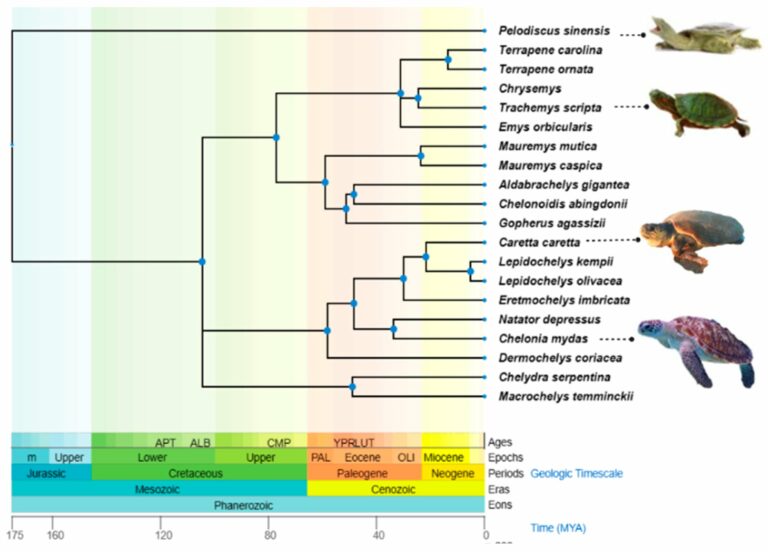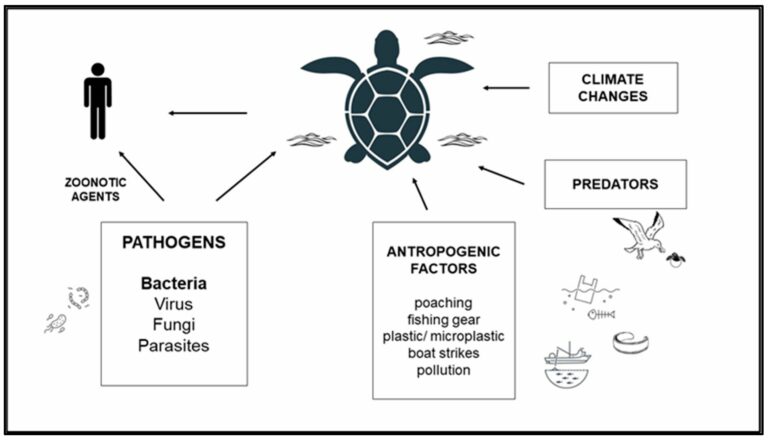How Do You Prevent Bacteria in a Turtle’s Water Pump
If you own a turtle, you might have faced the problem of bacteria in your turtle’s water pump. However, there is no need to worry as there is a straightforward solution to this issue.
How can you avoid bacteria in your turtle’s water pump? By following some simple steps, you can ensure a clean and healthy environment for your shelled companion.
This article will discuss effective techniques to keep your turtle’s water pump free from bacteria. Let’s delve into the steps you can take to maintain a safe and hygienic habitat for your beloved pet.
How Do You Prevent Bacteria in a Turtle’s Water Pump?
To care for captive turtles, it’s important to keep their water clean. Bacteria in their water pump can harm their health. This article will discuss preventing bacteria growth in a turtle’s water pump, ensuring a safe environment for your pet.
Regular Cleaning and Maintenance:
Proper cleaning and maintenance of the water pump is crucial in preventing bacteria growth. Here are some steps you can take:
Inspect the Water Pump:
Regularly check the water pump to identify any signs of bacterial growth. Look for slime, algae, or foul odor, which are indicators of bacterial contamination.
Unplug and Disassemble:
Before cleaning the water pump, always unplug it from the power source. Carefully disassemble the pump according to the manufacturer’s instructions, ensuring you don’t damage any components.
Rinse the Pump:
Using clean, lukewarm water, rinse all the parts of the water pump, including impellers, intake tubes, and housing. Remove any debris or visible signs of bacteria buildup.
Clean with Vinegar:
Prepare a solution of equal parts water and white vinegar. Soak the disassembled parts in this solution for about 30 minutes. Vinegar acts as a natural disinfectant, effectively killing bacteria and removing mineral deposits.
Scrub and Rinse:
After soaking, use a soft brush or toothbrush to scrub away any remaining residue. Pay close attention to hard-to-reach areas. Once thoroughly scrubbed, rinse all parts with clean water.
Reassemble and Test:
Once all the components are clean and dry, carefully reassemble the water pump according to the manufacturer’s instructions. Plug it back in and test its functionality. Ensure that water flows smoothly without any irregularities.
Maintain Proper Water Quality:
Aside from regular cleaning, maintaining proper water quality is vital to prevent bacteria growth. Here are some key points to consider:
Monitor Water Parameters:
Regularly check the temperature, pH level, and ammonia, nitrite, and nitrate levels in the turtle’s tank or pond. These water parameters directly impact the growth of bacteria. Maintain the appropriate levels to keep bacteria at bay.
Use a Reliable Filter:
A high-quality filtration system is essential in maintaining clean water conditions for your turtle. Invest in a reliable filter that suits the size of your tank or pond. Make sure to follow the manufacturer’s instructions for installation and maintenance.
Perform Water Changes:
Regularly changing a portion of the water in the tank helps remove accumulated waste and bacteria. Aim to replace around 25% of the water every two weeks or more frequently if necessary. Use dechlorinated water when refilling the tank.
Avoid Overfeeding:
Overfeeding can lead to excess waste in the water, promoting bacteria growth. Feed your turtle the appropriate amount of food according to its size and species. Remove any uneaten food promptly to prevent it from decomposing in the water.
Implement UV Sterilization:
Ultraviolet (UV) sterilizers are effective tools for controlling bacteria and algae growth in turtle tanks. These devices use UV light to kill bacteria, viruses, and other harmful microorganisms. Here’s how to utilize UV sterilization:
Choose the Right UV Sterilizer:
Select a UV sterilizer specifically designed for aquarium or pond use. Ensure that the sterilizer’s wattage matches the volume of water in your turtle’s enclosure. Consult the manufacturer’s recommendations for guidance.
Install the UV Sterilizer:
Follow the manufacturer’s instructions to install the UV sterilizer in the water circulation system. Position it after the filtration system, ensuring that water passes through the sterilizer before returning to the tank or pond.
Monitor and Replace UV Bulbs:
UV bulbs lose their effectiveness over time. Regularly check the intensity of the UV light emitted by the sterilizer and replace the bulbs according to the manufacturer’s recommendations. This ensures maximum bacteria-killing efficiency.
Optimize Oxygen Levels:
Proper oxygenation plays a vital role in preventing bacteria growth. Insufficient oxygen levels can create a favorable environment for bacterial proliferation. Consider the following:
Surface Agitation:
Ensure adequate surface agitation in the turtle’s tank or pond to promote oxygen exchange. This can be achieved through the use of air stones, air pumps, or water circulation devices. The movement of water helps oxygenate the environment.
Provide Adequate Space:
Turtles require space to swim to their heart’s content. Insufficient swimming space can lead to oxygen depletion. Ensure that your turtle has ample space to roam and access the water surface for breathing.
Maintain Water Temperature:
Temperature influences oxygen solubility in water. Maintain the appropriate water temperature for your turtle’s species to optimize oxygen levels. Refer to species-specific guidelines for the ideal temperature range.
Avoid Harmful Chemicals:
While it’s essential to maintain a bacteria-free environment, it’s equally crucial to avoid using harmful chemicals that can harm your turtle. Here’s what you need to know:
Non-Toxic Cleaning Products:
When cleaning the water pump or any equipment, ensure you use non-toxic cleaning products that are safe for aquatic life.
Avoid using harsh chemicals, such as bleach or ammonia-based cleaners, as they can be toxic to turtles.
Medications and Chemical Treatments:
Be cautious when using medications or chemical treatments in your turtle’s tank. Follow the instructions carefully and consult a veterinarian experienced in reptile care before administering any chemicals. Improper use can harm your turtle and disrupt the tank’s ecosystem.
Monitor and Address Health Issues:
Regularly monitor your turtle’s health and behavior to identify any signs of bacterial infection or illness. Promptly address any health issues to prevent the spread of bacteria. Key points to consider:
Observe Abnormal Behavior:
Pay attention to changes in your turtle’s behavior, such as decreased appetite, lethargy, or unusual swimming patterns. These could be signs of health issues caused by bacterial contamination.
Consult a Reptile Veterinarian:
If you suspect that your turtle is suffering from a bacterial infection or any health-related issues, seek professional advice from a reptile veterinarian. They can provide accurate diagnoses and recommend appropriate treatment options.
Quarantine Sick Turtles:
In cases of bacterial infection, it’s crucial to isolate the affected turtle to prevent the spread of bacteria to other tank inhabitants. Quarantine the sick turtle in a separate enclosure until it recovers fully.
Incorporating these preventative measures into your turtle’s care routine will significantly reduce the risk of bacteria growth in their water pump. Remember, maintaining a clean and healthy environment is crucial for the overall well-being of your beloved turtle.
Faqs for Prevent Bacteria in a Turtle’s Water Pump:
It is recommended to clean your turtle’s water pump at least once a month. However, if you notice any signs of bacterial growth or foul odor, it is best to clean it more frequently.
To clean your turtle’s water pump, you can start by unplugging it and removing it from the tank. Disassemble the pump as much as possible and clean each component thoroughly with warm water. You can also use a small brush to remove any stubborn debris.
No, it is not recommended to use any harsh chemicals or cleaning products to sanitize your turtle’s water pump. These substances can be harmful to your turtle and may contaminate the water. Stick to using warm water and a brush for cleaning purposes.
In addition to cleaning the water pump, you can prevent bacterial growth in your turtle’s water tank by maintaining good water quality. This includes regular water changes, using a filtration system, and ensuring proper tank maintenance.
Yes, you can also consider adding beneficial bacteria supplements to your turtle’s water. These supplements help to establish a healthy bacterial balance, reducing the opportunity for harmful bacteria to grow. Additionally, monitoring water temperature and ensuring proper circulation can also aid in preventing bacterial growth.
Final Thoughts:
Regular cleaning and maintenance are crucial to prevent bacteria in a turtle’s water pump. Check the pump regularly for debris or organic matter that could encourage bacterial growth. Thoroughly clean the pump and filter to remove any buildup. You may also use a water conditioner or treatment made for turtle tanks to control bacteria levels. By maintaining good water quality and a clean environment, you can reduce the risk of bacterial contamination in the water pump.

